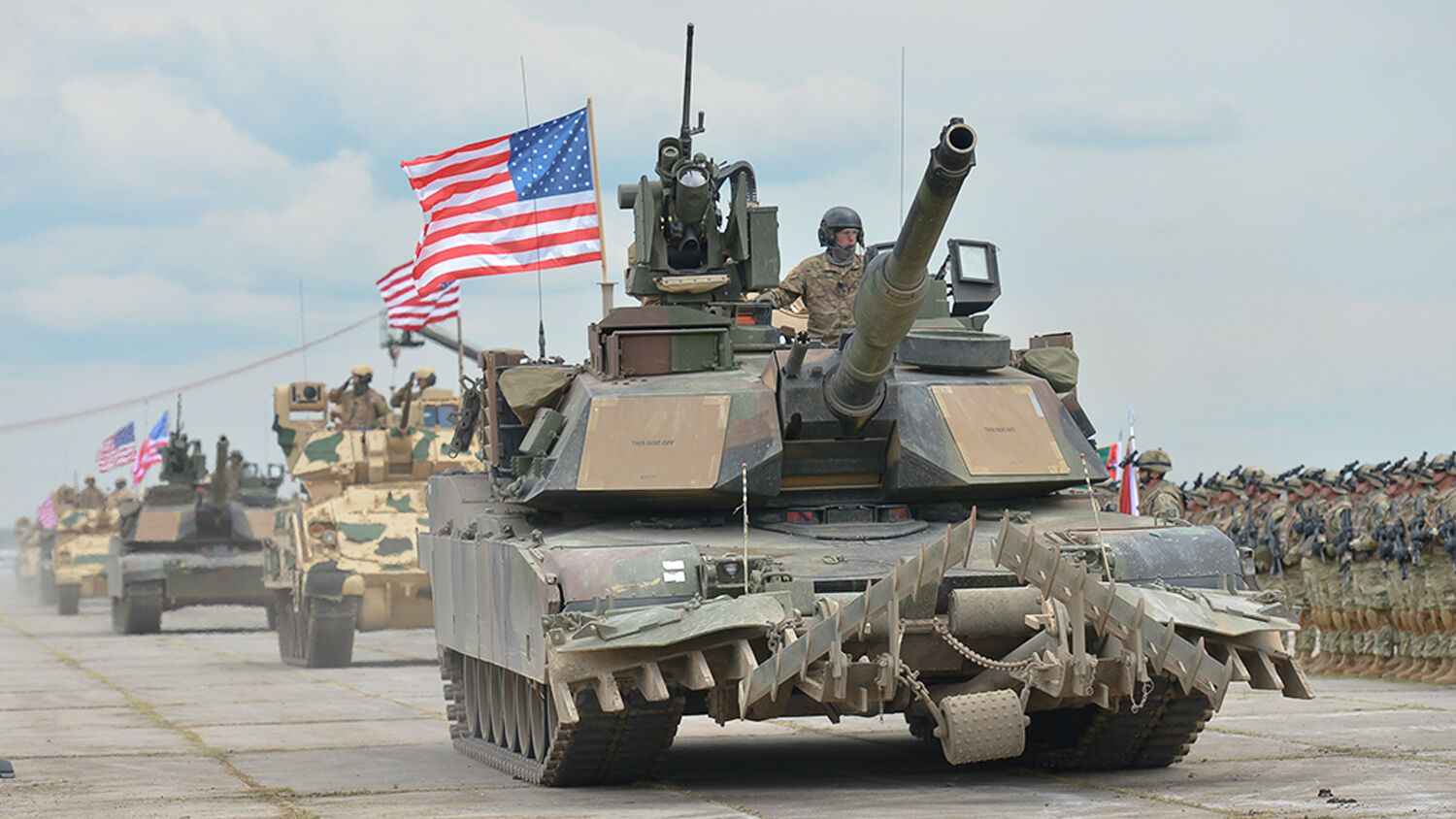
America’s Main Battle Tank Becoming Obsolete
For decades, the M1A2 Abrams main battle tank has been supreme on the battlefield. First produced in 1990, the model debuted during Operation Desert Storm. The Abrams outperformed the Iraqi’s Russian-made T-55s, T-62s and T-72s, literally peeling off the armor and turrets with its 120-mm smooth-bore cannon. Since 1991, the M1A2 has seen extensive deployment around the world.
However, it seems that the sun is setting on the M1A2 Abrams’ dominance. According to comments from a top United States general, Russian technology is beginning to surpass the American advantage in heavy armor. Washington Examiner reported:
“I would not say that we have the world-class tank that we had for many, many years,” Lt. Gen. John Murray said during a Senate Armed Services subcommittee hearing on modernizing the Army. “I’ll be the optimist and say that we’re at parity with a lot of different nations.”
That was one example of what the Army calls a loss of “overmatch”—the technological advantage over potential adversaries that has ensured U.S. preeminence among world militaries in recent decades. Murray warned that “our most capable enemies are closing quickly” in a variety of areas, due to recent budget cuts to military spending, but the prowess of what the military calls heavy armor is particularly worrisome.
Heavy armor refers to a main battle tank: the platform with the most armament and armor. Its main function is to search out and destroy the armored units of the enemies, and to protect infantry by giving dismounted soldiers an umbrella of fire. The M1A2 is equipped with a 120mm cannon, a 7.62-mm machine gun, and a .50-caliber machine gun. It also carries the most sophisticated communication and coordination technology in the world. It is protected by depleted uranium armor, which helps deflect armor-penetrating rounds.
The M1A2 ran into trouble during the Iraq War in urban combat with insurgents using more powerful Russian antitank missiles that could knock out American armor. The U.S. military upgraded the Abrams with more armor and remote-controlled machine guns as part of a Tank Urban Survival Kit (tusk).
For decades, the U.S. Army enjoyed two main advantages in tank warfare: tanks of equal capability were developed by America’s allies, and the M1A2 had never fought other major powers. Washington Examiner continued:
Murray identified two American allies that have “parity” with U.S. tanks—Israel and the United Kingdom—but also warned that Russia, a looming adversary, has closed the gap with at least one tank model and potentially a second. “I think the T-90 is probably pretty close,” he told Sen. Tom Cotton, R-Ark. “People talk about the Armata tank and it’s still, in my mind, not completely fielded.”
The British Challenger ii and the Israelis Merkava 4 are on equal footing with the Abrams, but these models will never experience combat against each other. The worrisome development is in Russian technology. According to Murray, the fearsome T-90 is on parity with the M1A2, though the two have never clashed on the battlefield before. The real concern comes when the Russians will roll out their new tank.
The Russians are beginning to deploy the T-14 Armata, which boasts a 125-mm main gun and an active protection system (aps). The aps is most important, since it deploys countermeasures against antitank missiles, thus nullifying the major threat to heavy armor. Israel spearheaded the development of such technology, but if Russia equips all Armatas with an aps, the U.S. military would be at a heavy disadvantage. The U.S. is overhauling some Abrams to create the M1A2 sep V3, which will have aps, but these units are still small in number and untested.
The main complaint against the Abrams is its weight: about 75 tons. This limits the usefulness of the tank, since it cannot cross most of the bridges in the undeveloped nations the U.S. expects to fight in. The sep V3 overhaul would reduce the weight, but other than refurbishing old Abrams, the U.S. has no plan for a new main battle tank. As Murray said:
We’re just about reaching the limits of what we can do with the Abrams …. So it is time for us to start looking at a next generation tank. What I worry about is, there is nothing on the near horizon that indicates a fundamental breakthrough in technology where we can come up with a lighter tank. And I think we would be mistaken to build another 75-ton tank as long as protection requirements are where they are.
This reality could prove to be fatal for any future war that the U.S. seeks to wage. America’s military doctrine is to fight an early, decisive battle against the enemy and destroy its military capability. This relies heavily on American superiority in airpower and heavy armor. If either of these advantages are lost, the U.S. military will struggle to fight a decisive battle against any major power. And now Russia is starting to deploy the T-14 Armata, and Germany is developing the Leopard iii.
This is just the latest development in a long list of areas in which the U.S. military is falling behind. But America’s frightful decline goes far beyond limiting the military budget, war fatigue and political deadlock. The real cause of these issues is not physical but spiritual. The strength of the American military rests not in physical power but in national character. To learn more about the fundamental reason behind the decline of the U.S. military, read The United States and Britain in Prophecy, by Herbert W. Armstrong.
